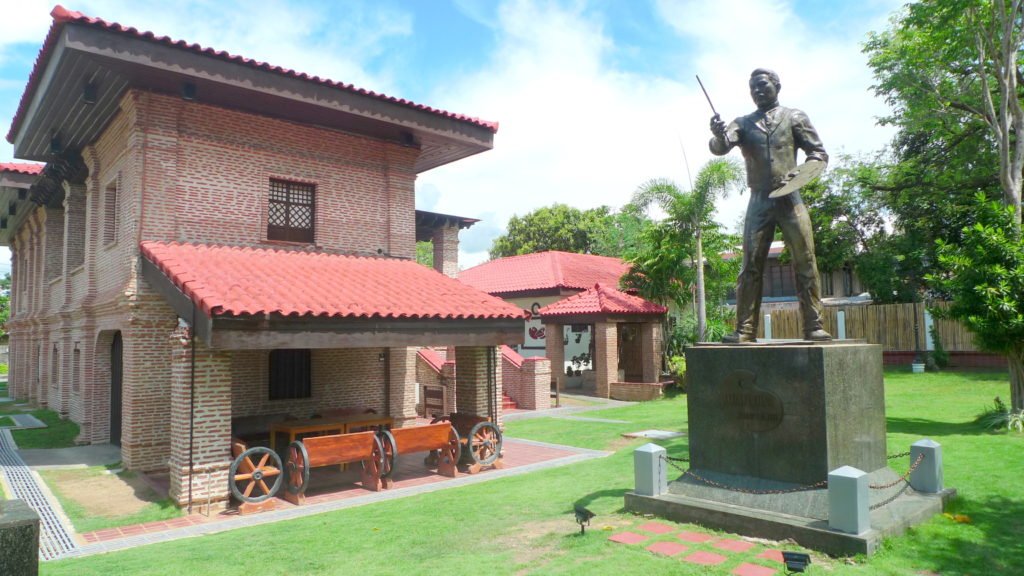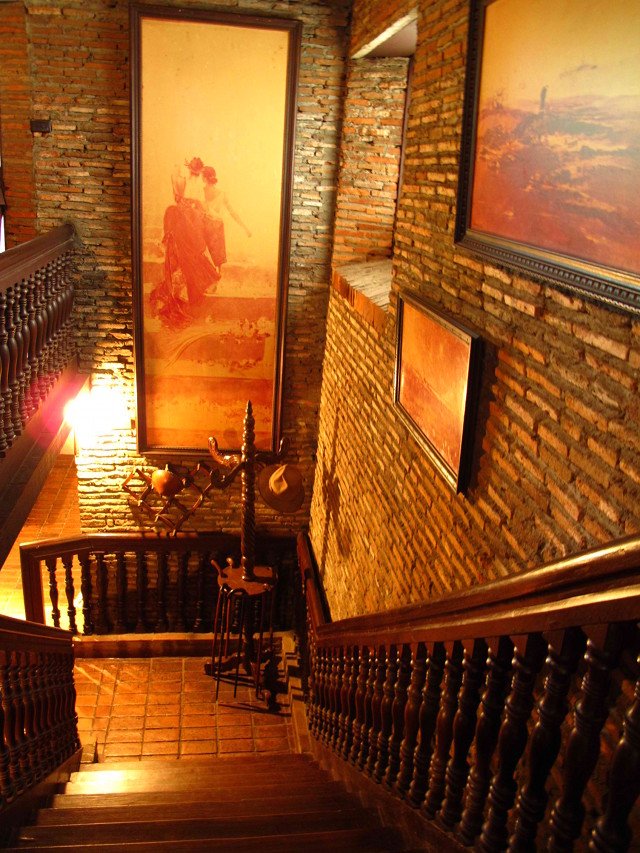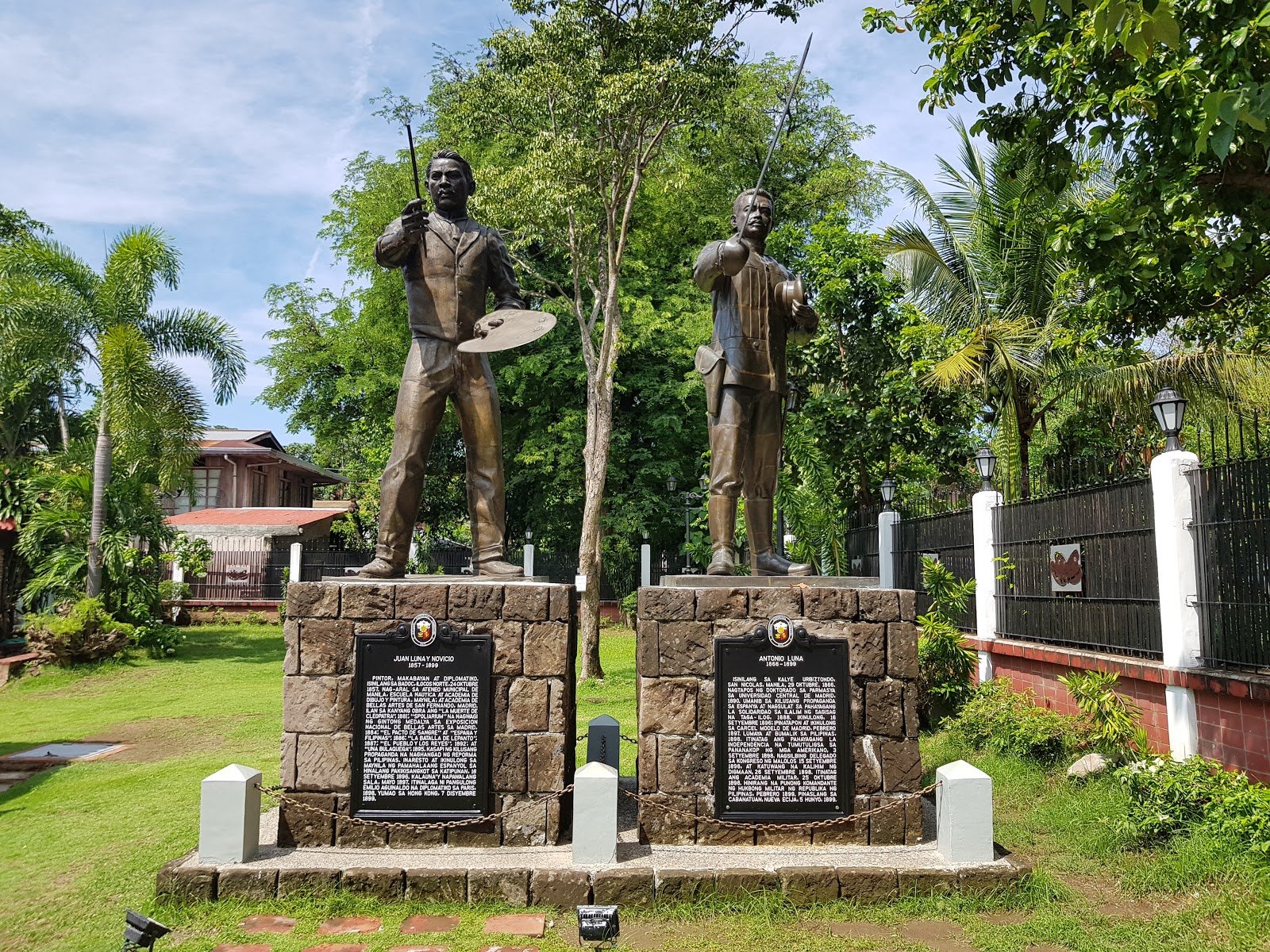La Luna Shrine
The Juan Luna Shrine is the reconstructed two storey ancestral house of the painter Juan Luna, the revolutionary general Antonio Luna, and the violinist Manuel Luna. Built in the typical middle class fashion, the house was burned down in 1861 and was rebuilt using clay bricks and molave wood. Now a museum, the shrine houses photos of the Luna family and reproductions of Luna's paintings. The second floor retains the living room, bedrooms, azotea, and chapel, all furnished with period furniture and accessories. Antonio Luna de San Pedro y Novicio Ancheta (Spanish: [an?tonjo ?luna]; October 29, 1866 – June 5, 1899) was a Filipino army general who fought in the Philippine–American War. Regarded as one of the fiercest generals of his time, he succeeded Artemio Ricarte as the Chief of Staff of the Armed Forces of the Philippines. He sought to apply his background in military science to the fledgling army. A sharpshooter himself, he organized professional guerrilla soldiers later called the "Luna Sharpshooters" and the "Black Guard". His three-tier defense, now known as the Luna Defense Line, gave the American troops a hard campaign in the provinces north of Manila. This defense line culminated in the creation of a military base in the Cordillera. Despite his commitment to discipline the army and serve the Republic which attracted the admiration of people, his temper caused some to abhor him, including people from Aguinaldo's Cabinet. His efforts were not without recognition during his time, for he was awarded the Philippine Republic Medal in 1899. He was also a member of the Malolos Congress. Besides his military studies, Luna also studied pharmacy, literature and chemistry. Family background - Antonio Luna de San Pedro y Novicio Ancheta was born on 29 October 1866 in Calle Urbiztondo (renamed Barraca Street), Binondo (now part of San Nicolas), Manila. He was the youngest of seven children of Joaquín Luna de San Pedro y Posadas (1829–1891) from Badoc and Spanish mestiza Laureana Novicio y Ancheta (1836–1906) from Luna, La Union (formerly Namacpacan). His father was a traveling salesman of the government tobacco monopoly. The tobacco monopoly was formally established in 1782. After their family moved to Manila in 1861, his father became a merchant in Binondo. Siblings - His older brother, Juan, was an accomplished painter who studied in the Madrid Escuela de Bellas Artes de San Fernando. His Spoliarium garnered one of the three gold medals awarded in the Madrid Exposición Nacional de Bellas Artes in 1884. Another brother, José, became a doctor. Yet another brother, Joaquín, fought with Antonio in the Philippine–American War, and later served as governor of La Union from 1904 to 1907. Joaquín would also serve as senator from 1916 to 1919. His three other siblings were Numeriana, Manuel, and Remedios
MIS 2020-03-16 05:31:21





